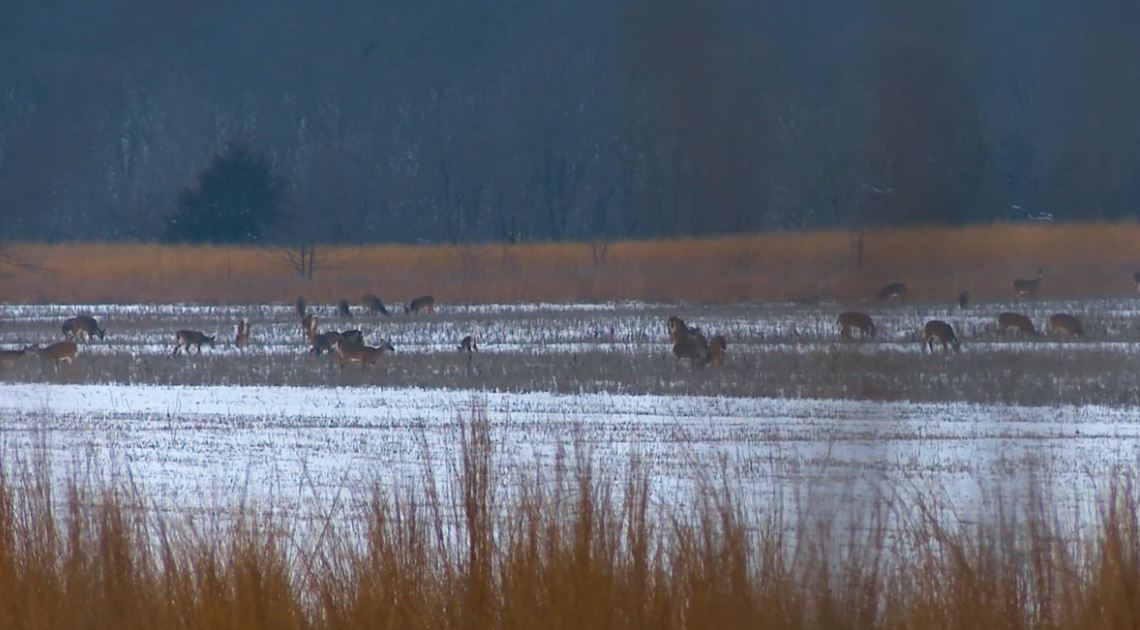Be Cautious About Supplemental Feeding Deer During Harsh Winters
Filed under: Hunting Blog
Recently someone asked me about the hazards or benefit of trying to supplement whitetail food sources in winter, such as rolled out round bails of grass hay or such. Winter can bring on some tough conditions for whitetails. It’s important to be cautious about altering a deer’s diet – especially overnight.
There are billions of microbes (bacteria) in a deer’s rumen (four chambered stomach) including thousands of species. Each species serves a role. Populations of these microbes increase and decrease as the deer’s diet changes.

This is perfect for wild deer as food sources almost always become available at a trickle and then ramp up. For example, consider a few acorns falling during the early fall, or a bit of clover or native vegetation greening up before most does.
This trickle-passed change allows microbe populations to increase or decrease based on the food to be digested.
There are documented cases where deer have been hungry for days or weeks, then fed hay (deer don’t eat grass, but will eat alfalfa, etc.). The deer consume the new food source – often eating 2-5% of their body weight, then return to cover and die with a full belly. They couldn’t digest the new food source as the needed microbe populations had decreased.
When possible, it’s always best to start any feeding program slowly. I wouldn’t start feeding now, unless it was certain the deer were going to starve to death. Then you save the ones that survive the massive diet change.
Enjoy creation,
Grant



